STATUE DE LOKESHVARA PADMAPANI EN ALLIAGE DE CUIVRE DORÉDENSATIL, TIBET CENTRAL, XIVE SIÈCLE Himalayan Art Resources item no. 4836 26.1 cm (10 1/4 in.) high FootnotesA GILT COPPER ALLOY FIGURE OF LOKESHVARA PADMAPANI DENSATIL, CENTRAL TIBET, 14TH CENTURY 丹薩替 藏中 十四世紀 銅鎏金蓮華手觀音像 Provenance: With Claude de Marteau, Brussels, by 1975 Depicting the bodhisattva Avalokiteshvara holding a lotus, this sculpture's refined modelling, thick gilding, and meticulous inset jewelry exemplifies work executed for wealthy Tibetan monasteries by Newari master craftsmen. While several stylistic features relate to contemporaneous figures produced for worship in Nepal, such as the bodhisattva's broad Malla-style forehead, the near-pristine preservation of the sculpture indicates it was venerated in Tibet. In fact, the specific treatment of the base, with its flat back, beaded rims, and tall plump lotus petals is a quintessential feature of sculptures produced by Newari artisans for Densatil and neighboring monuments during the last quarter of the 14th century. From the late-13th to 15th century, the early Kagyu order known as the Phagmo Drupa established Densatil as their monastic seat of power and commissioned eight lavishly decorated monumental stupas, known as tashi gomang ("many doors of auspiciousness") in the monastery's main hall. These multi-tiered structures represented one of Tibet's great artistic wonders and were covered in gilt bronze sculptures and relief panels. The present sculpture's subject and scale, along with the finishing of its back, suggest it was initially created for the fourth tier of one such tashi gomang stupa, where it would have been paired with a seated attendant figure of Hayagriva (Estournel, www.asianart.com/articles/densatil/, figs. 27 & 28). The sculpture would have almost certainly flanked a Buddha image, but it is also possible that it stood by a Buddha image on an altar, either at Densatil or at neighboring Neudong or Tsetang. Helping to locate the sculpture to the 14th century, stylistic traits such as the long tresses, upswept armbands, and jewelry with uniformly circular inset stones are shared by a group of sculptures produced by Newari artists for the Yuan imperial court in the late 13th to 14th centuries, as well as a 14th-century Nepalese Vajradhara in the Museum Rietberg, Zurich (Bigler, Before Yongle, 2015, pp. 74-91, nos. 17-20; Uhlig, On the Path to Enlightenment, 1995, pp. 60-1, no. 21, respectively). On the whole, Densatil sculpture of the 14th century is more refined than that of the 15th. Other closely related Densatil sculptures attributed to the 14th century are published in Czaja and Proser (eds.), Golden Visions of Densatil, 2014, pp. 116-7, 136, & 167, nos. 21-2, 31, & 42. Three related Lokeshvara Padmapani sculptures are preserved in the Potala Palace, Lhasa (von Schroeder, Buddhist Bronzes in Tibet, 2002, pp. 970-71, nos. 235B-E).
STATUE DE LOKESHVARA PADMAPANI EN ALLIAGE DE CUIVRE DORÉDENSATIL, TIBET CENTRAL, XIVE SIÈCLE Himalayan Art Resources item no. 4836 26.1 cm (10 1/4 in.) high FootnotesA GILT COPPER ALLOY FIGURE OF LOKESHVARA PADMAPANI DENSATIL, CENTRAL TIBET, 14TH CENTURY 丹薩替 藏中 十四世紀 銅鎏金蓮華手觀音像 Provenance: With Claude de Marteau, Brussels, by 1975 Depicting the bodhisattva Avalokiteshvara holding a lotus, this sculpture's refined modelling, thick gilding, and meticulous inset jewelry exemplifies work executed for wealthy Tibetan monasteries by Newari master craftsmen. While several stylistic features relate to contemporaneous figures produced for worship in Nepal, such as the bodhisattva's broad Malla-style forehead, the near-pristine preservation of the sculpture indicates it was venerated in Tibet. In fact, the specific treatment of the base, with its flat back, beaded rims, and tall plump lotus petals is a quintessential feature of sculptures produced by Newari artisans for Densatil and neighboring monuments during the last quarter of the 14th century. From the late-13th to 15th century, the early Kagyu order known as the Phagmo Drupa established Densatil as their monastic seat of power and commissioned eight lavishly decorated monumental stupas, known as tashi gomang ("many doors of auspiciousness") in the monastery's main hall. These multi-tiered structures represented one of Tibet's great artistic wonders and were covered in gilt bronze sculptures and relief panels. The present sculpture's subject and scale, along with the finishing of its back, suggest it was initially created for the fourth tier of one such tashi gomang stupa, where it would have been paired with a seated attendant figure of Hayagriva (Estournel, www.asianart.com/articles/densatil/, figs. 27 & 28). The sculpture would have almost certainly flanked a Buddha image, but it is also possible that it stood by a Buddha image on an altar, either at Densatil or at neighboring Neudong or Tsetang. Helping to locate the sculpture to the 14th century, stylistic traits such as the long tresses, upswept armbands, and jewelry with uniformly circular inset stones are shared by a group of sculptures produced by Newari artists for the Yuan imperial court in the late 13th to 14th centuries, as well as a 14th-century Nepalese Vajradhara in the Museum Rietberg, Zurich (Bigler, Before Yongle, 2015, pp. 74-91, nos. 17-20; Uhlig, On the Path to Enlightenment, 1995, pp. 60-1, no. 21, respectively). On the whole, Densatil sculpture of the 14th century is more refined than that of the 15th. Other closely related Densatil sculptures attributed to the 14th century are published in Czaja and Proser (eds.), Golden Visions of Densatil, 2014, pp. 116-7, 136, & 167, nos. 21-2, 31, & 42. Three related Lokeshvara Padmapani sculptures are preserved in the Potala Palace, Lhasa (von Schroeder, Buddhist Bronzes in Tibet, 2002, pp. 970-71, nos. 235B-E).
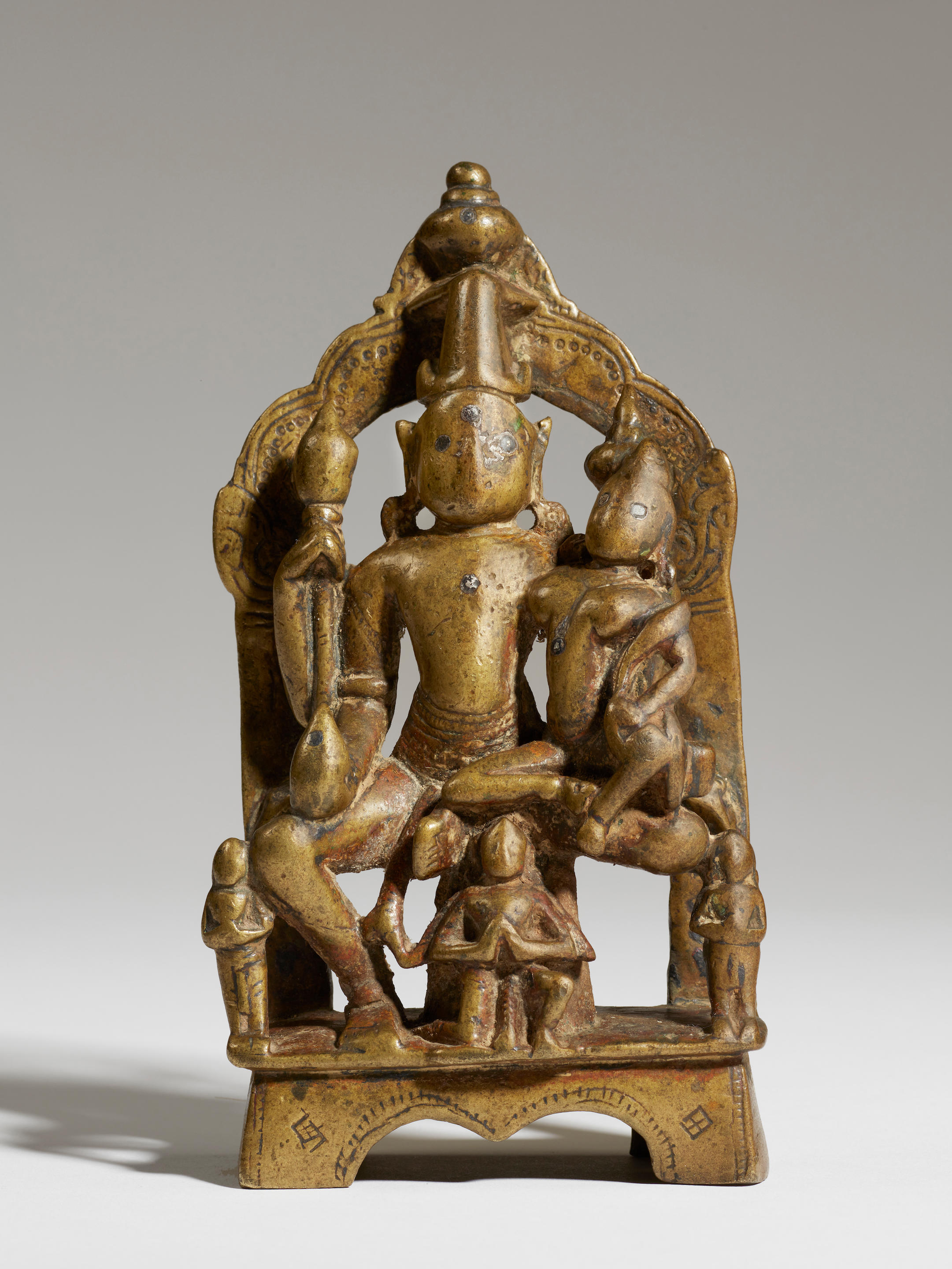
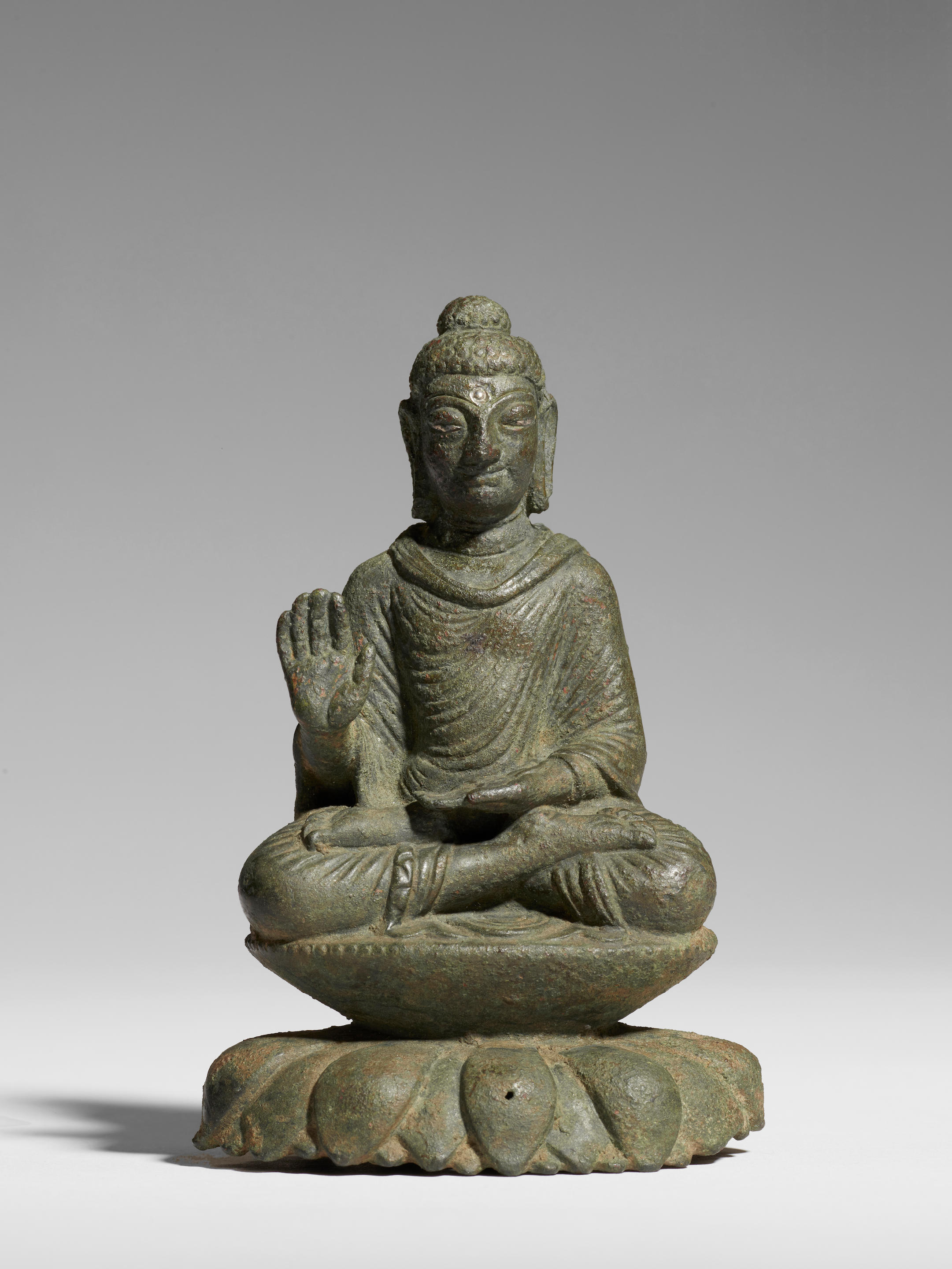
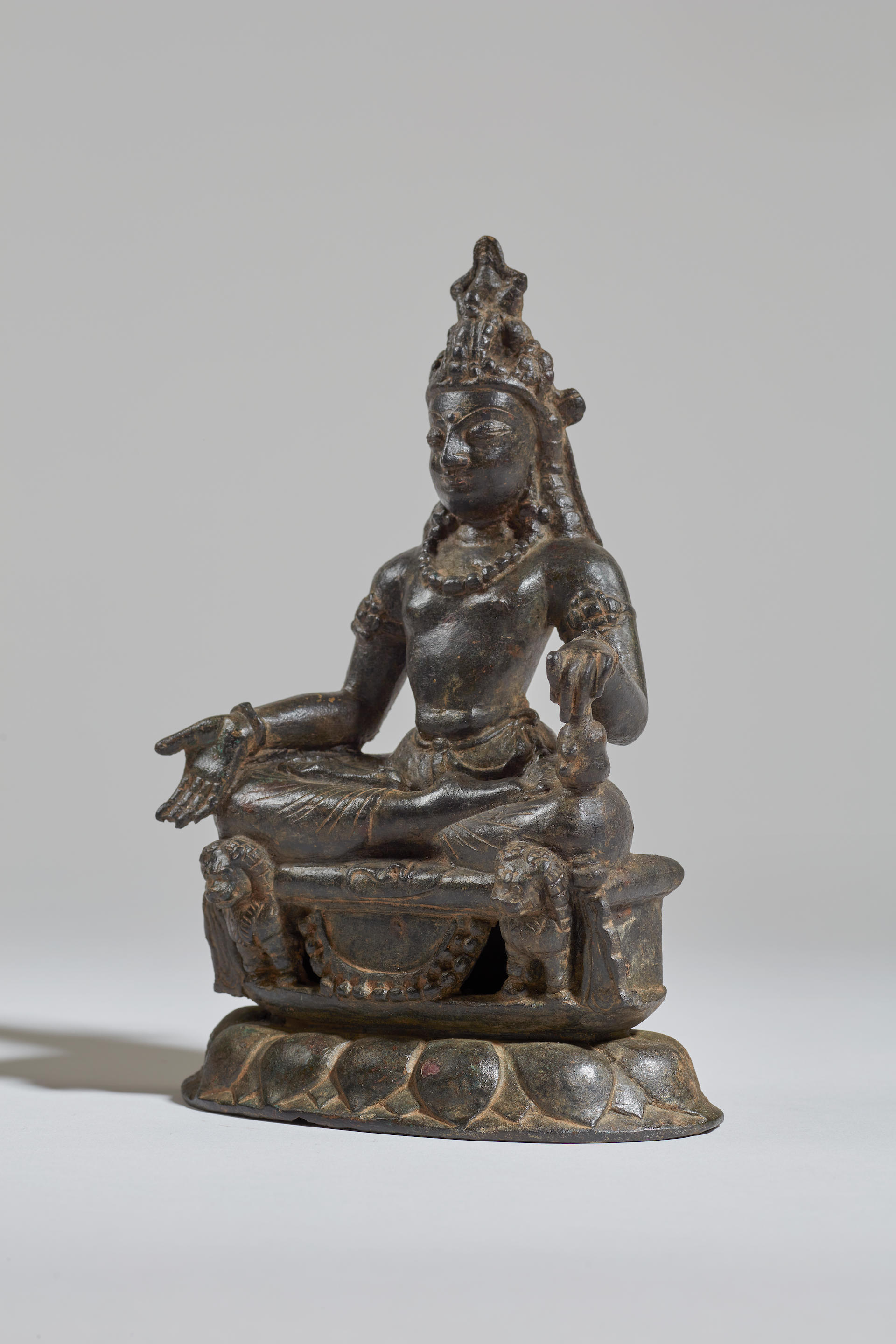
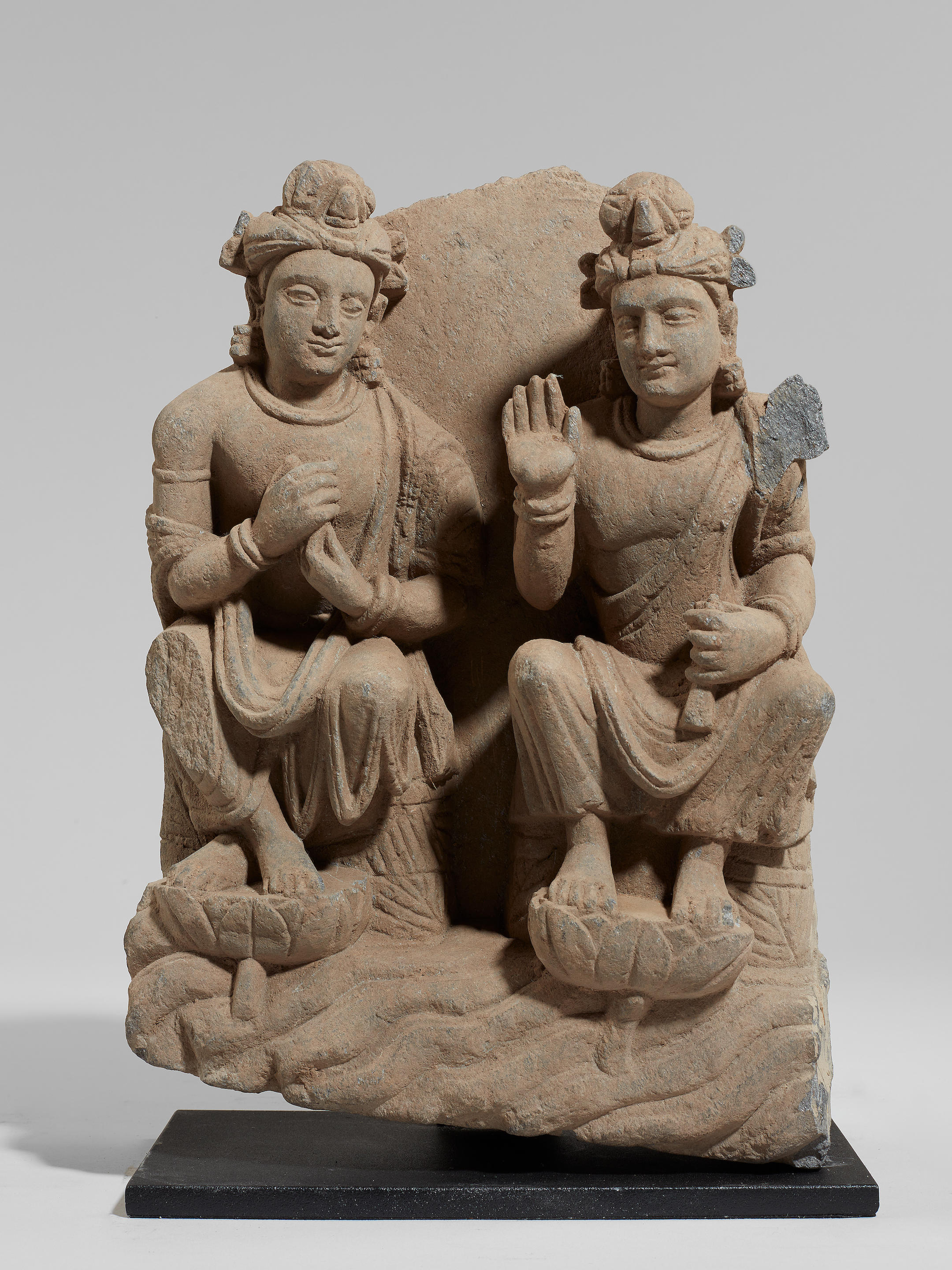
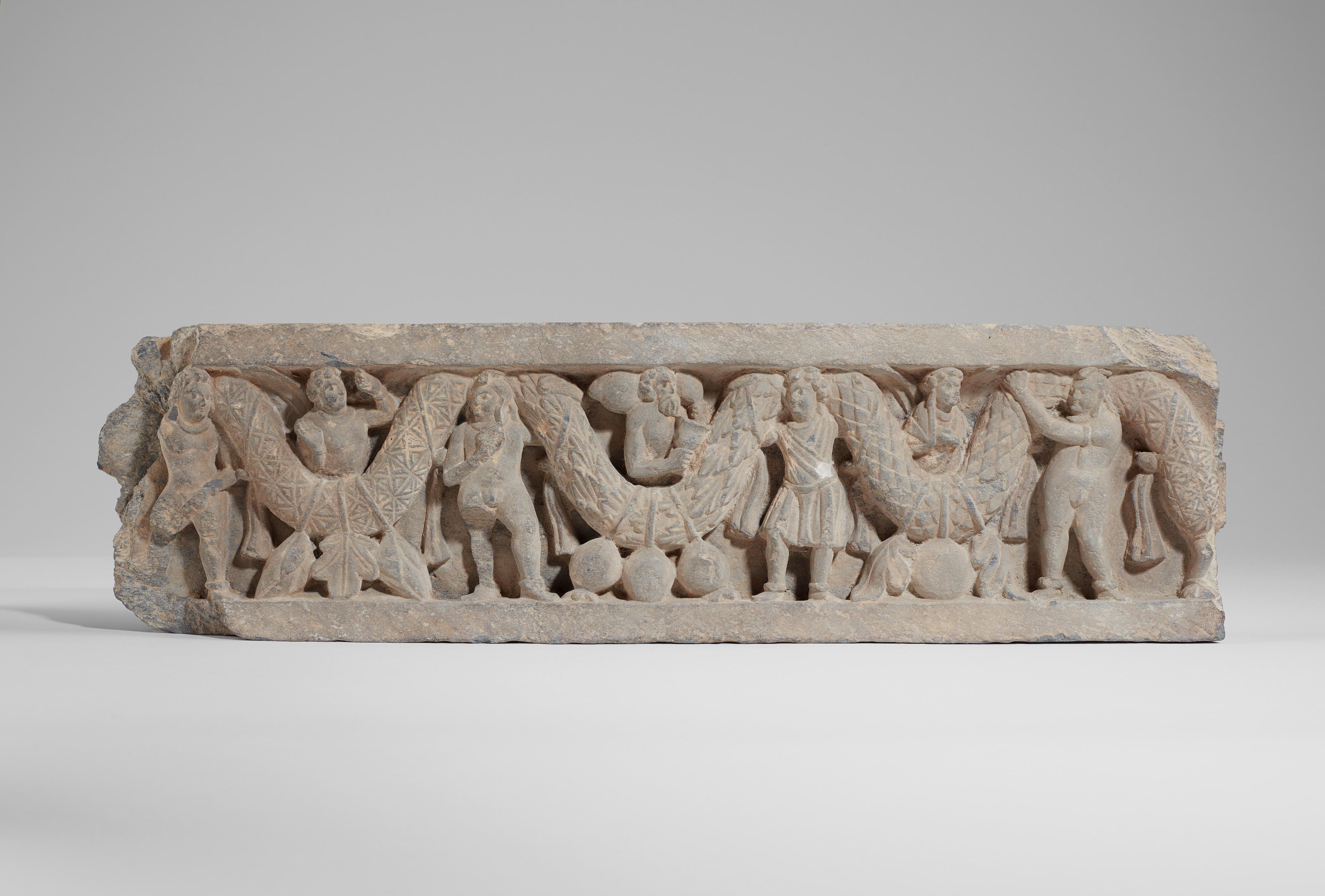
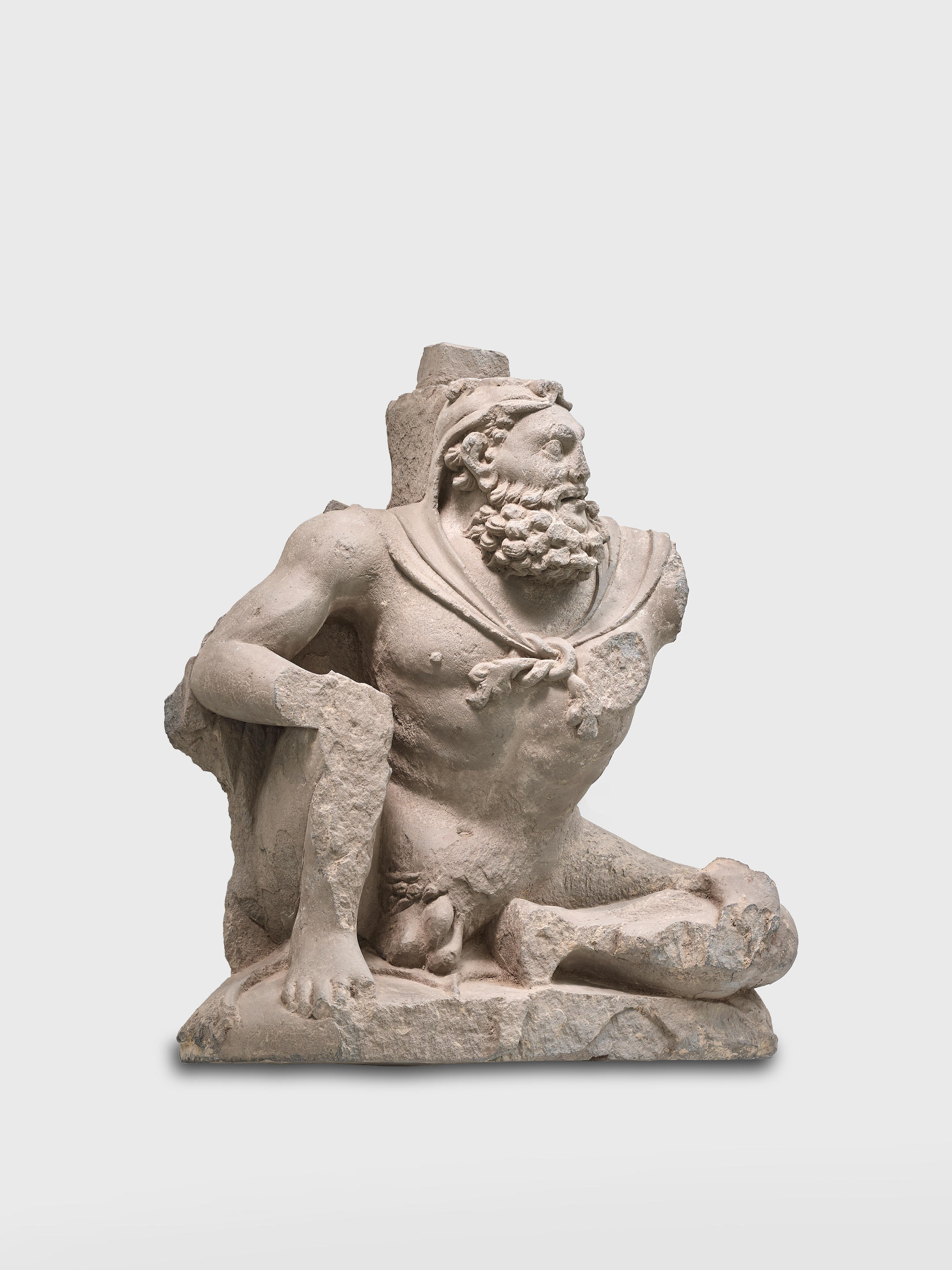
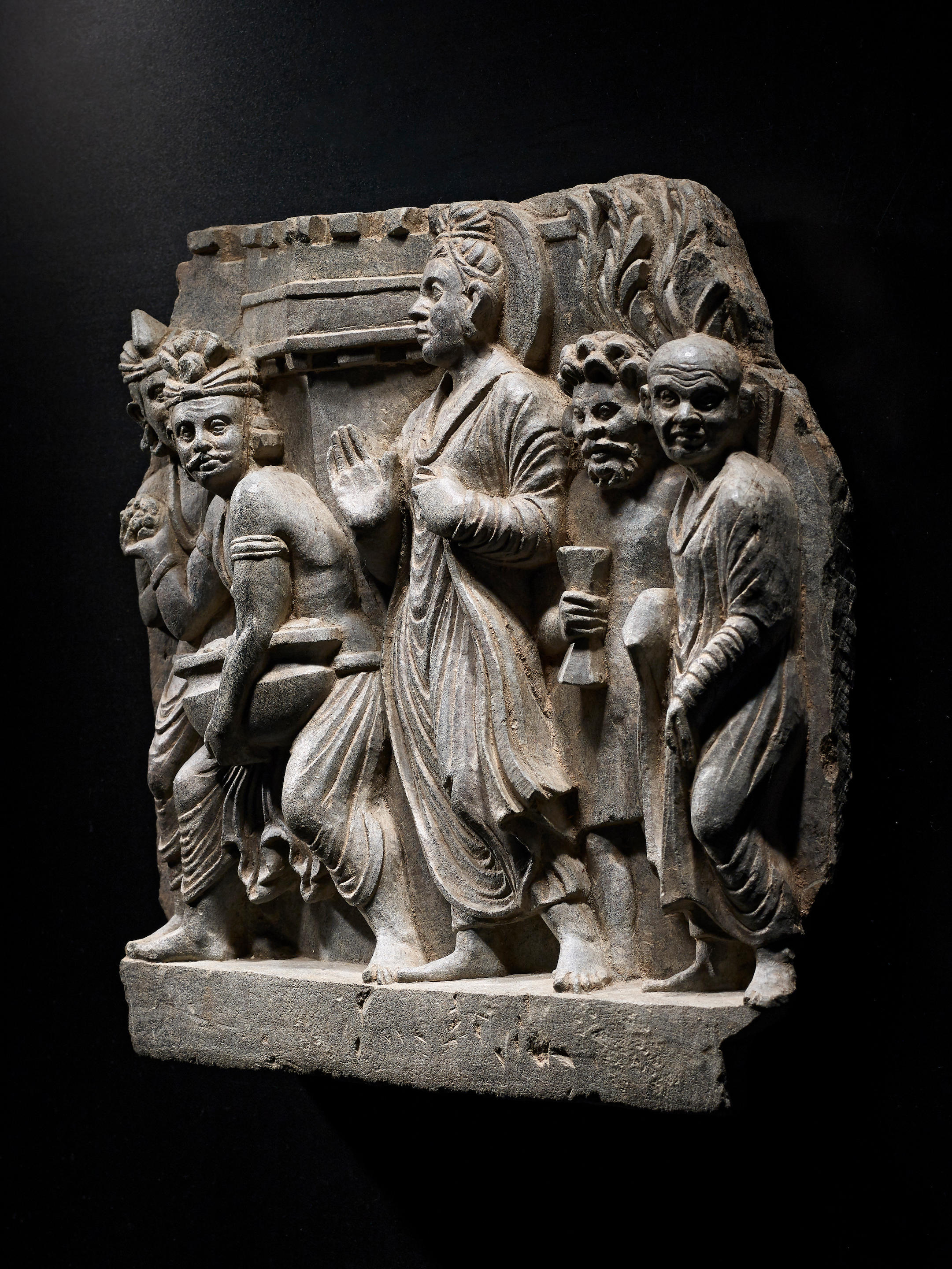
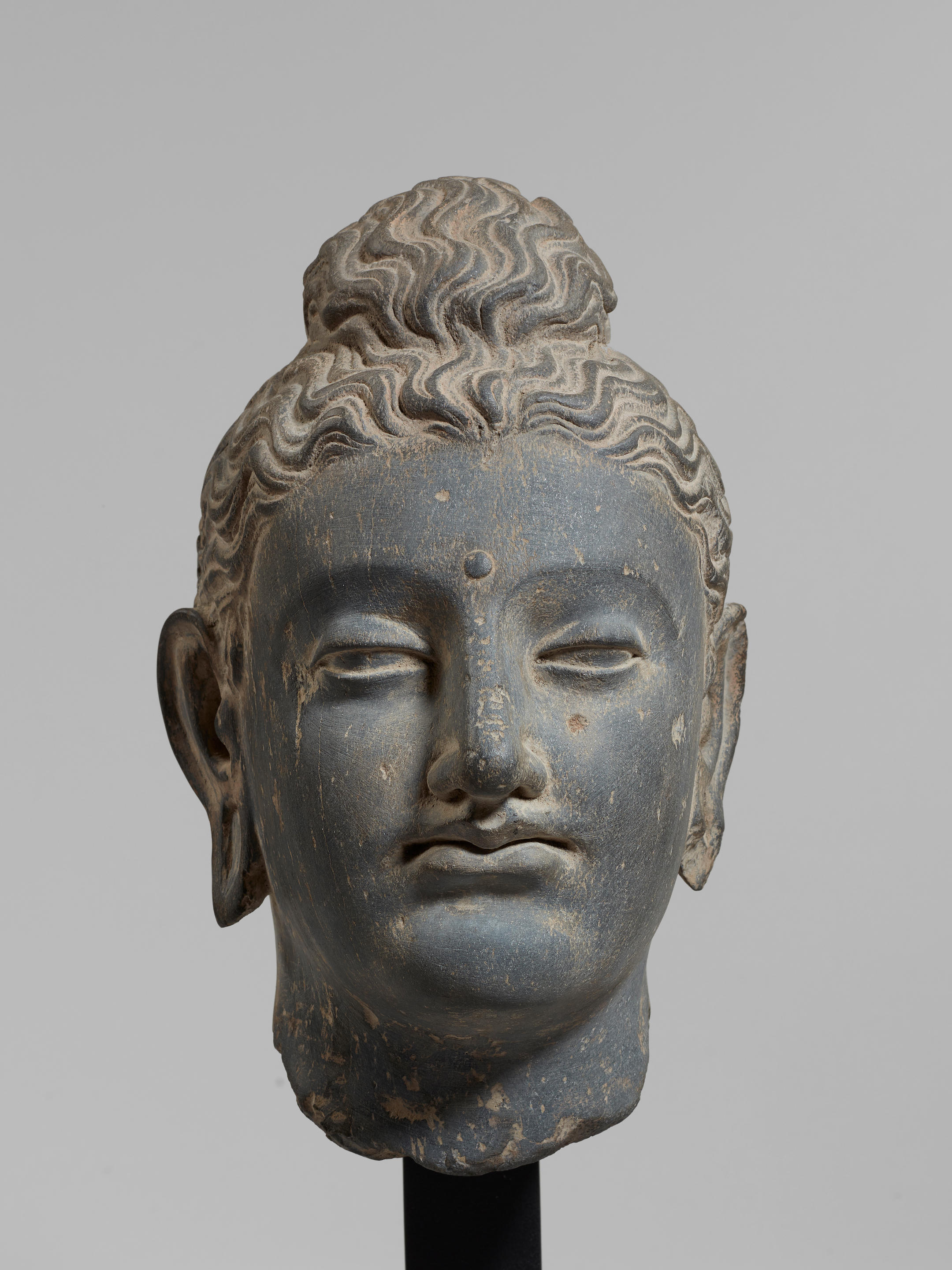
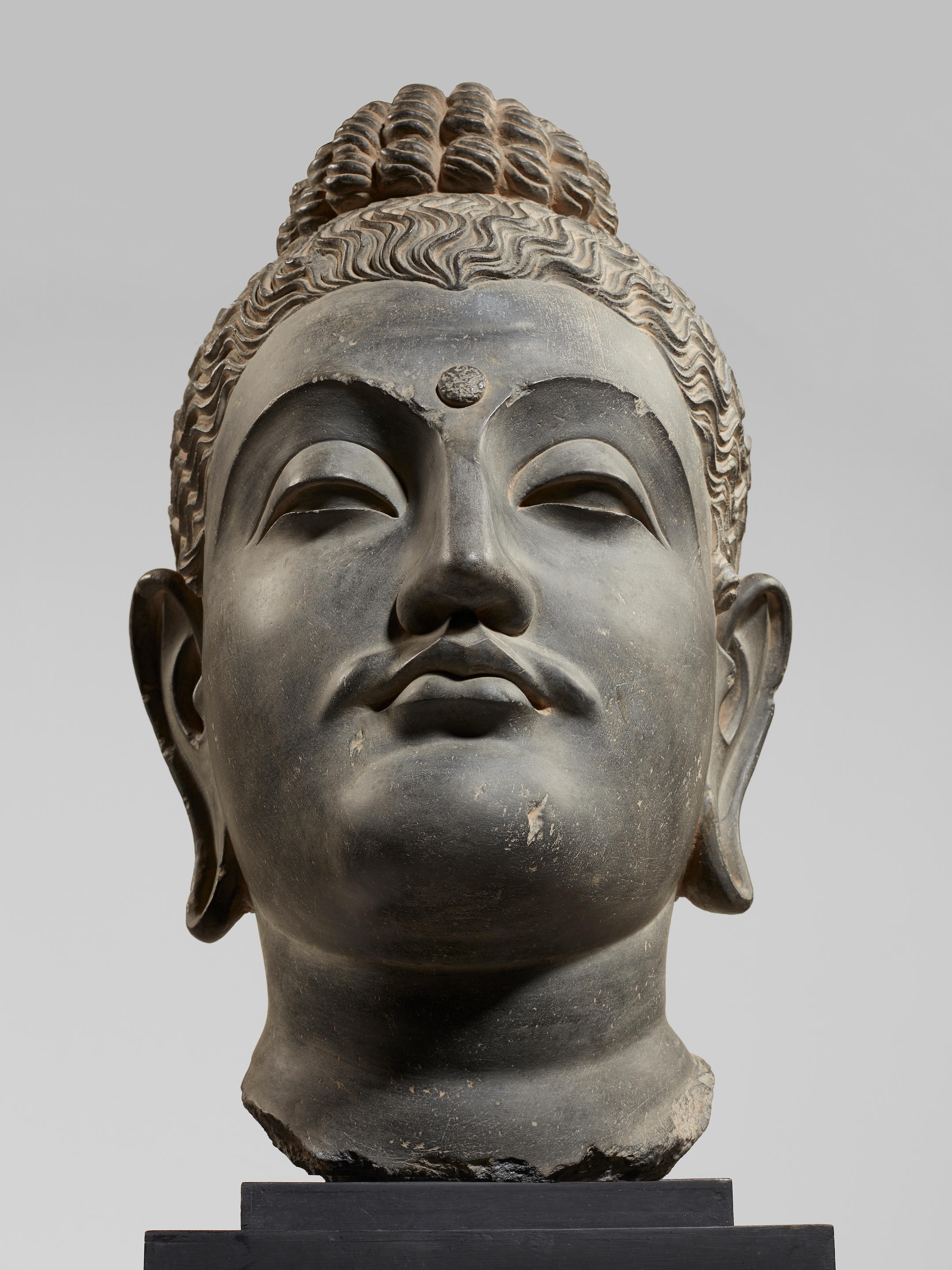

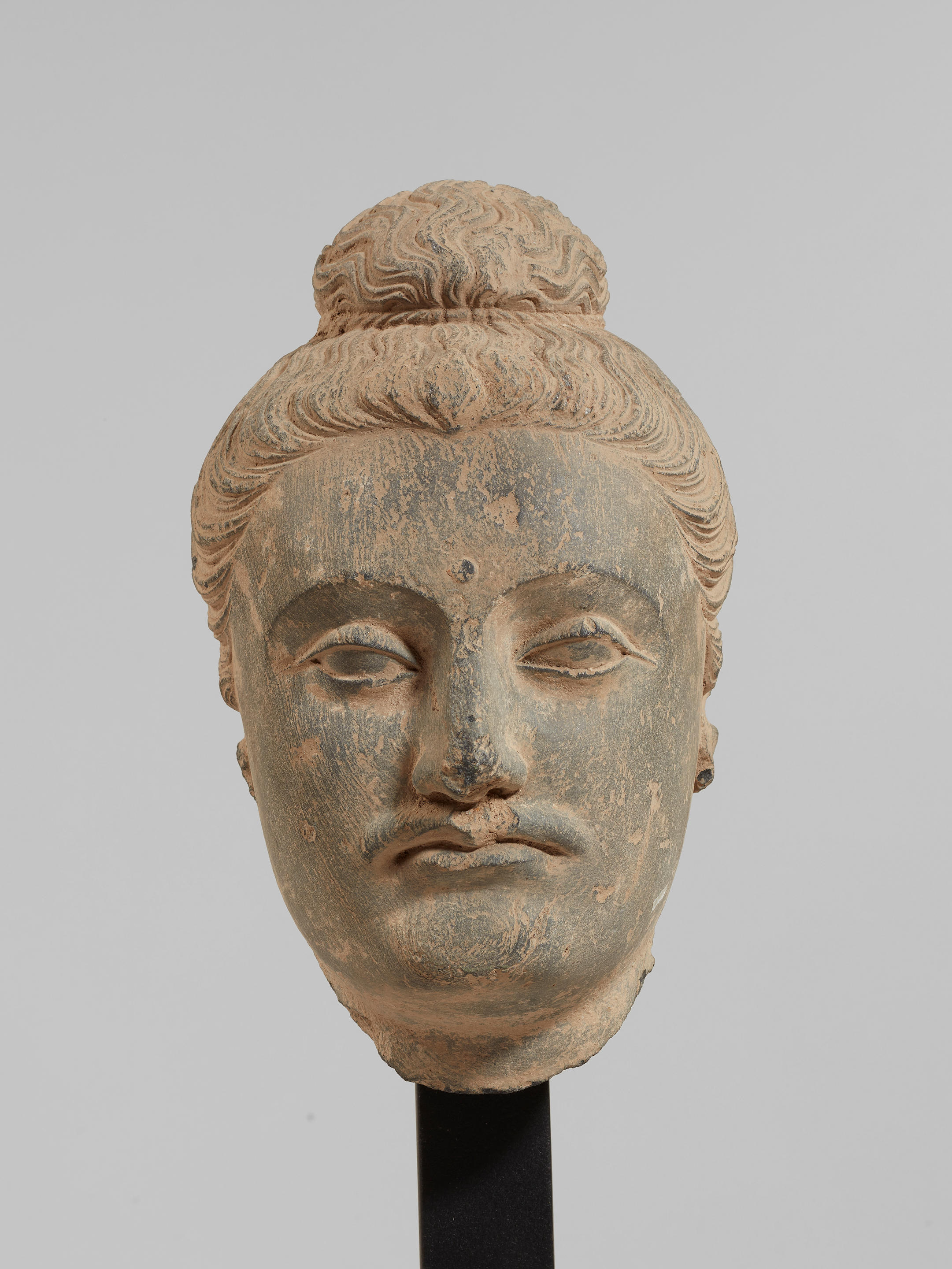
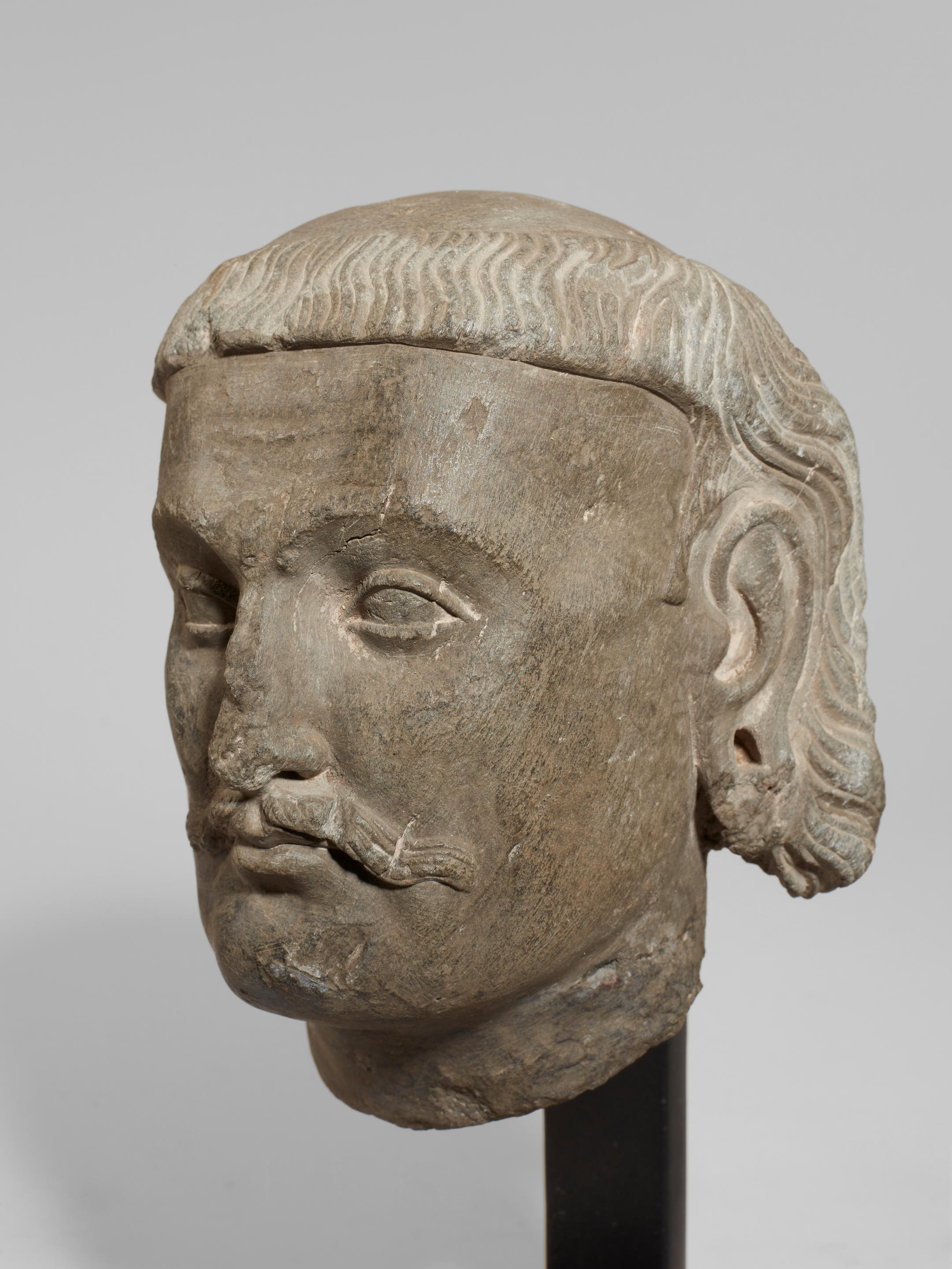
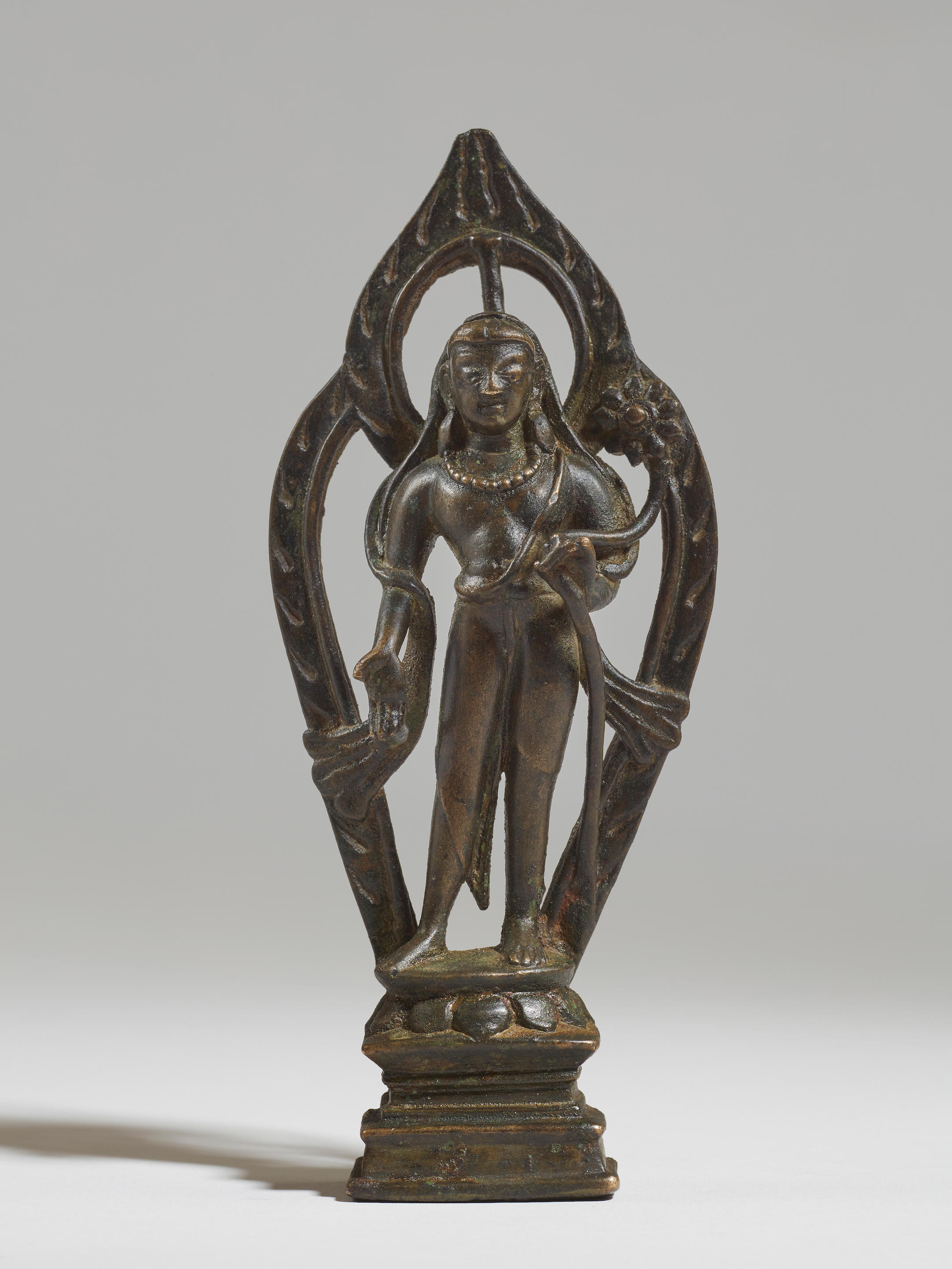
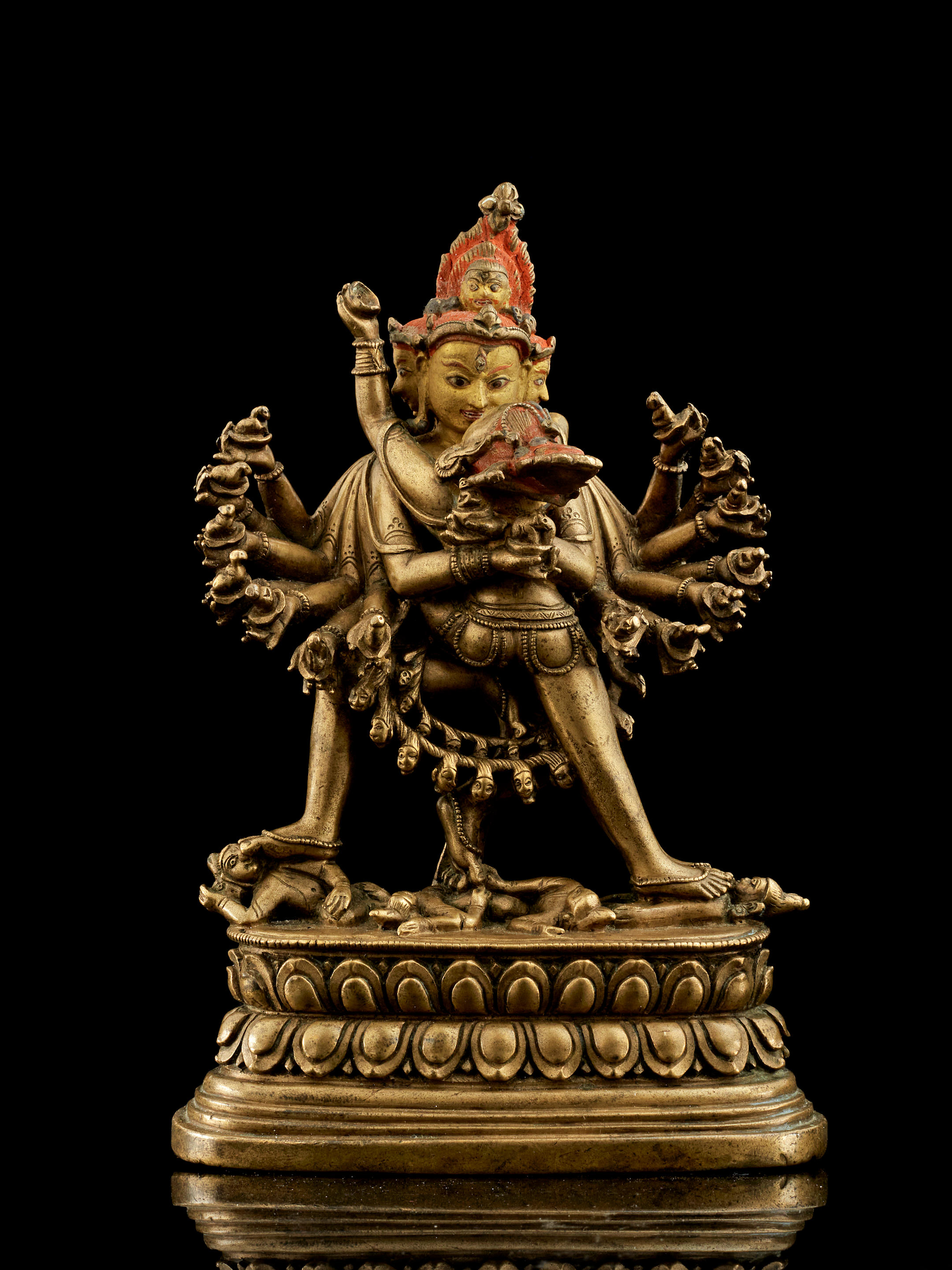
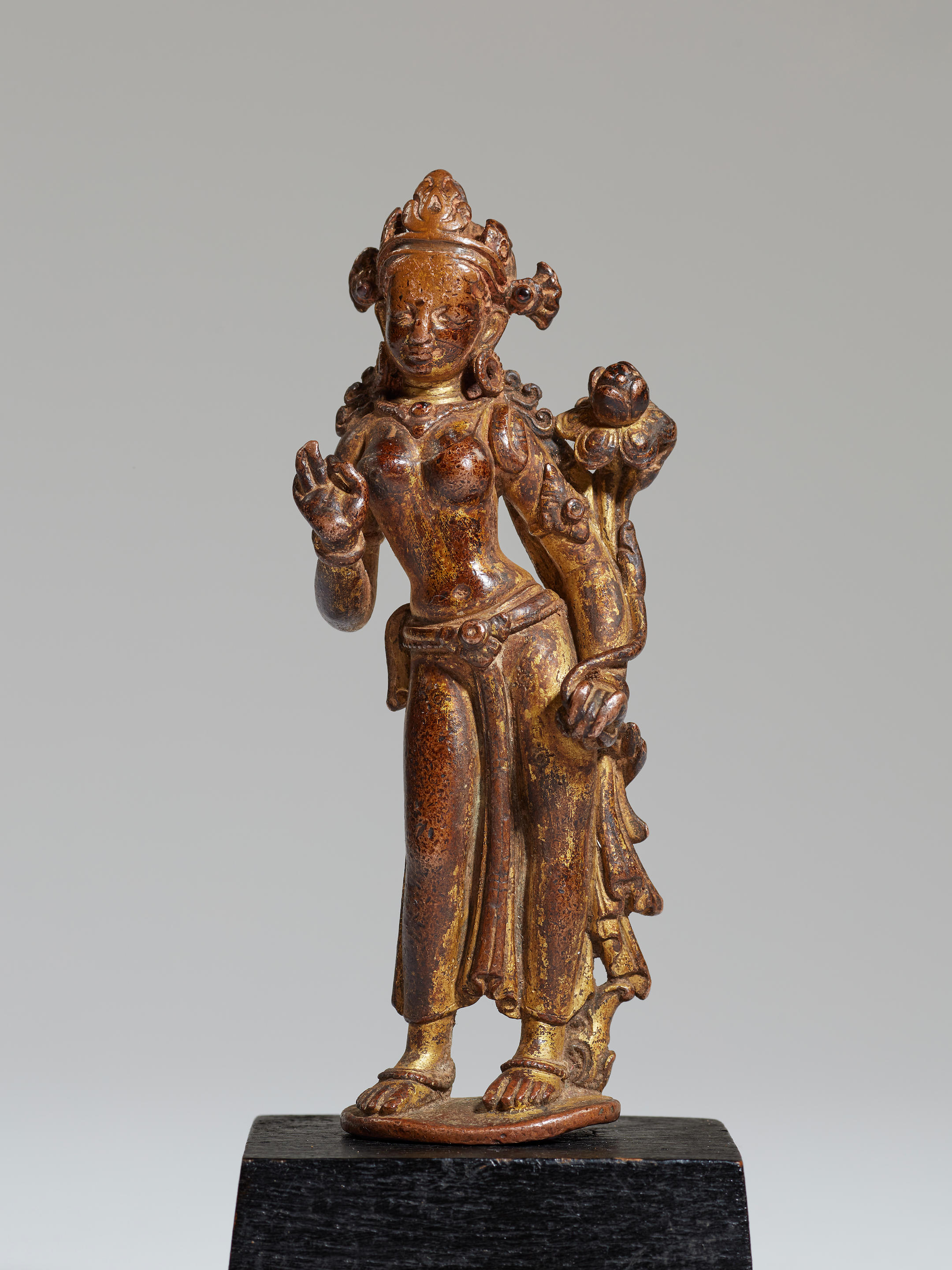
Testen Sie LotSearch und seine Premium-Features 7 Tage - ohne Kosten!
Lassen Sie sich automatisch über neue Objekte in kommenden Auktionen benachrichtigen.
Suchauftrag anlegen